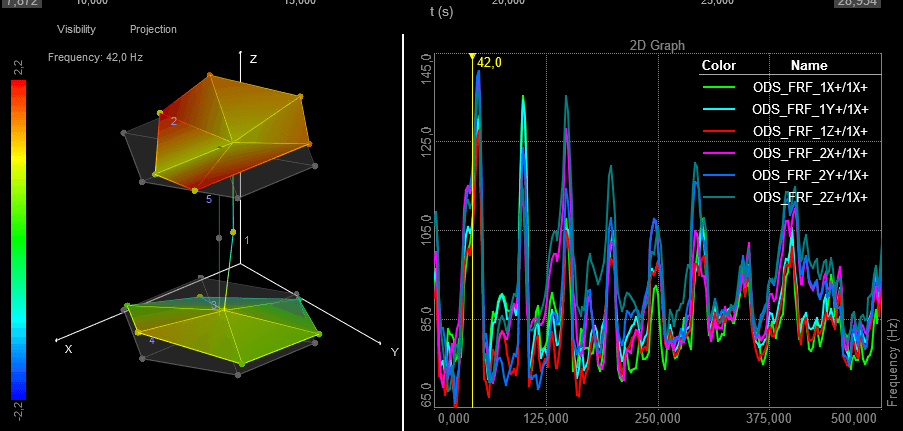Testing software specialist Dewesoft has announced the release of a major upgrade to its DewesoftX DAQ software. The new version is a free upgrade for all DewesoftX users and adds several powerful capabilities that test engineers have requested. These include the ability to download test results for analysis before a test is finished, thanks to it now being possible to run a second copy of the software and open a data file that is being written. All the data stored to that point can then be loaded for offline review and analysis.
The software’s Orbit analysis module now includes a dedicated visual control: the Turbo-machinery Domain Signature Waveform Graph, which augments the rotor dynamics tool. It presents time domain data from each of the sensors used within a constant timespan, along with a clear indication of the zero pulses, allowing engineers to observe the start and stop of each period.
The scope of historical data can be shown in time or number of revolutions with freely definable duration or with the x-axis supporting the display of time, revolution count or angle. The Orbit Waveform Graph widget can also display a set of industry-standard parameters, such as the direction of rotation and the sensor angle relative to the keyphasor (zero) position.
DewesoftX also now offers a customizable status toolbar at the top of the software screen. This provides additional information about the setup configuration and system performance. The software’s Power module has also undergone a major upgrade, improving the memory footprint of the GPU calculations at high sampling rates, and the implementation of period values and period frequency to the GPU calculation. GPU-accelerated calculation unlocks the true potential of the Power module, allowing it to run with a 15MS/s sampling rate. Advanced power calculations can now be performed faster than ever before.
Finally, DewesoftX 2022.2 includes a new graphical engine that provides smoother graphics, optimized performance and many other powerful features. One resulting new feature is the ability to change the thickness of data lines on graphs, which dramatically improves the look and legibility of measured data.


